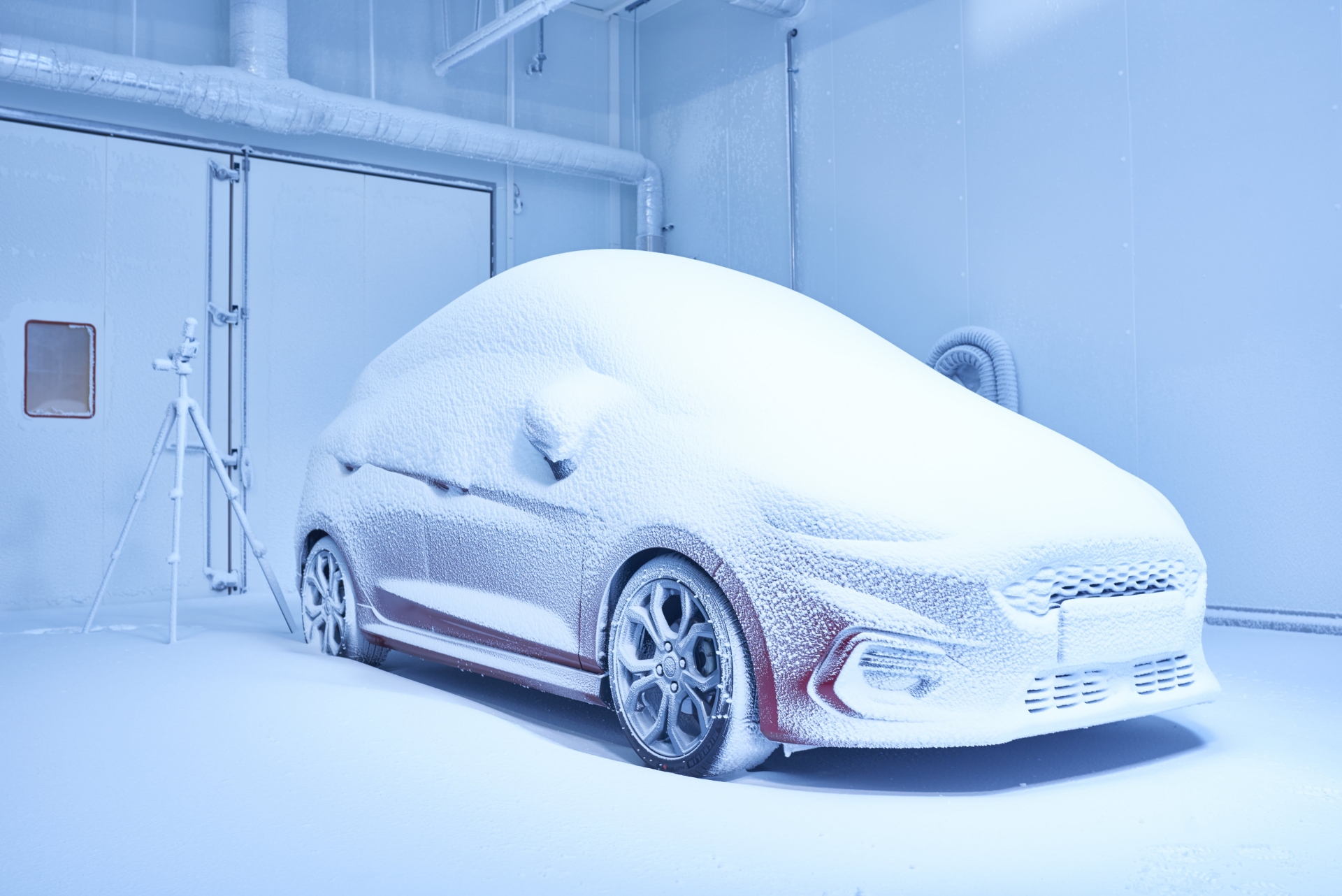

Ford has announced that it’s built a test center, dubbed the Weather Factory, which can create extreme weather conditions under one roof at any time of the day, enabling engineers to test vehicles like the Ford KA+ and Ford Transit.
The $82.4 million testing facility is roughly the size of soccer pitch and offers the first automotive wind tunnel to simulate a variety of weather conditions. Ford engineers can now take vehicles on challenging journeys around the world and expose them to the desert heat of the Sahara, the arctic cold of Siberia and the heavy humidity of Costa Rica.
The facility can cool two rooms to negative 40 degrees Fahrenheit, heat them up to 131 degrees Fahrenheit, and generate 95 percent humidity. These extreme temperatures make the facility at Ford’s John Andrews Product Development Centre in Cologne, Germany, the hottest, coldest and most humid place in Europe.
Facility engineers can work on up to 10 different vehicles simultaneously, testing comfort, safety and durability, as well as electrical performance, braking, air conditioning, trailer towing, cabin heating and traffic jam situations as well as analyze the effects of high speed winds on exterior parts, robustness against rain and snow, and how fast a windscreen defrosts at different temperatures.
All Ford vehicles will be tested in the facility, which features three climate wind tunnels. Wind Tunnel 1 is set up for hot and cold immersion testing. The 28 spotlights with 4,000 watt bulbs help to simulate the powerful sun beams that enable engineers to check how fast the cabin can be cooled. It can also evaluate the interior noise from vehicle systems at different speeds, temperatures, and humidity levels, to check the heating and air conditioning noise.
Wind Tunnel 2 is has a similar setup and can be used to make snow and rain to check their effect on visibility, engine starts and how long it takes to heat the cabin. Wind Tunnel 3 is the altitude lab, where engineers can test vehicles at wind speeds of up to 75 mph at up to 17,060 feet. The high altitude cold start and durability tests are done to ensure the vehicle’s liquids don’t burst their lines when working under higher pressure.
“The vast range of punishing simulation tests will enable Ford drivers to be confident their vehicles can handle whatever climate zone they live in,” said Joe Bakaj, vice president of product development at Ford of Europe. “Travelling to the four corners of this building is like taking a trip to the four corners of the world, and our engineers will do that around the clock, every day, to continue to develop future best-in-class vehicles.”
In total, the facility demands 11 megawatts of electricity—enough to power a small town of 2,400 inhabitants—which comes from a certified, fully renewable and environmentally friendly source in Scandinavia, provided by RheinEnergie.
The opening of this multi-million dollar facility comes as no surprise as Ford seems to be spending a lot on testing facilities. Earlier this year, it announced that it will invest $200 Million in a New Wind Tunnel Facility in Michigan.
